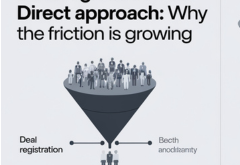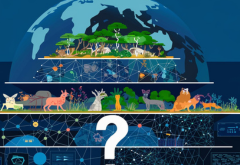For two decades, Software-as-a-Service (SaaS) has been the dominant force in enterprise IT. Partners, system integrators (SIs), and managed service providers (MSPs) built thriving businesses around deploying Salesforce, ServiceNow, Microsoft 365, SAP, and countless other SaaS platforms. But a new wave is rising, one that promises to be even bigger — and it’s coming faster than the channel expects. By 2026, analysts predict AI-driven software agents will eclipse SaaS as the primary growth engine in enterprise technology. For partners, this isn’t just another incremental shift; it’s a market reset that demands urgent action.
The Market Signals Are Clear
The numbers tell the story. The global SaaS market is currently estimated at $266 billion in 2024, forecast to reach $315–408 billion by 2025, and over $1.1 trillion by the early 2030s. Growth is steady at around 13–20% annually — impressive, but slowing compared to its early days of hyper-adoption. AI agents, by contrast, are accelerating at a blistering 40–45% CAGR. Current estimates put the agentic AI market at just a few billion today, but by 2030 forecasts converge on tens of billions — and by 2035, upwards of $450 billion in revenue. This surge is not speculative hype. Enterprises are already moving. In late 2024, surveys showed more than half of firms actively exploring AI agents, 37% piloting them, and 12% deploying them at scale. The trajectory looks exactly like SaaS adoption in the mid-2000s — exploratory today, near-ubiquitous tomorrow. By 2026, Gartner expects 40% of enterprise applications to embed task-specific agents, compared to less than 5% today. That is the definition of an inflection point.
What Makes Agents Different from SaaS
SaaS digitized and delivered applications via the cloud, but still relied on humans to initiate, manage, and complete workflows. AI agents flip that model. These are autonomous digital workers: copilots that sit inside productivity apps, customer-service agents that resolve tickets without humans, workflow orchestrators that stitch together HR, finance, and IT systems into end-to-end processes, and task agents that refactor code or analyze data on their own.
The key difference? SaaS needs a user interface. Agents act on intent. Instead of clicking through dashboards, a CFO can tell an agent: “Optimize our Q2 budget and produce a board-ready report”. Instead of manually updating CRM records, a sales agent can enrich, qualify, and follow up with leads end-to-end. It’s a leap from software as a tool to software as a colleague.
Why This Matters for Partners and MSPs
For the channel, this shift is existential. SaaS made reselling and deploying licenses profitable, but margins have been eroding as vendors move direct-to-customer and bundle AI into their offerings. Partners who remain “SaaS installers” will be squeezed further.
AI agents, however, create entirely new revenue pools:
- Agent Strategy Consulting: Helping CIOs and line-of-business heads identify where to start agent deployments — customer support, HR onboarding, supply chain optimization — and charting adoption roadmaps.
- Integration and Orchestration: Stitching together copilots across Microsoft, Salesforce, AWS, and ServiceNow into seamless workflows.
- Industry-Specific Agents: Packaging tailored solutions — mortgage assistants in BFSI, patient intake agents in healthcare, logistics planners in supply chain — that solve vertical problems.
- Managed Services: Providing ongoing governance, monitoring, compliance, and security for fleets of agents. Managing 50 agents across multiple business functions will require orchestration platforms and continuous oversight — a sweet spot for MSPs.
In short, while SaaS is turning into enterprise plumbing, AI agents are becoming the value-creating layer. Partners who pivot early will own the transformation conversation in the boardroom.
A Window That Won’t Stay Open
Analysts caution that companies have only a 3–6 month window to form an “agentic strategy” before adoption spikes in 2026. That urgency translates directly to partners. Waiting means risk of losing relevance as clients turn to other consultancies, startups, or even the SaaS vendors themselves for guidance. Consider the parallels with cloud migration. In the early 2010s, the partners who quickly built cloud practices dominated the next decade, while those who hesitated were reduced to low-margin resellers. The same pattern is unfolding now. The winners will be those who pivot from SaaS implementers to agent orchestrators — and do it before the inflection year.
Competitive Landscape for the Channel
The threat is twofold. First, SaaS vendors are embedding agents directly. Microsoft’s Copilot suite already has millions of users across GitHub, Office, Dynamics, and Windows. Salesforce has Agentforce, AWS has Bedrock Agents, ServiceNow has its generative AI workspace. These incumbents will drive agent adoption into their customer bases with or without partner help.
Second, a wave of startups is emerging — building workflow orchestrators, autonomous scheduling assistants, or verticalized copilots. Many are flush with VC funding; seed-stage investment into agent startups topped $700 million in 2025 alone. These firms are courting enterprises directly, sometimes bypassing traditional channel structures.
For SIs and MSPs, this means the safe middle ground of “we’ll wait and see” is disappearing. Either you carve out the integration and orchestration role — helping clients navigate a crowded field of agents — or you risk being left behind while others step in.
What Partners Need to Do Now
To capitalize on the agent wave, partners must retool their playbooks immediately. That means:
- Upskill Teams: Train consultants and architects on AI orchestration platforms and prompt engineering. Build in-house expertise in governance and compliance for agent ecosystems.
- Forge Alliances: Partner not just with SaaS giants but also with emerging agent startups. Build multi-vendor portfolios that let you offer choice and flexibility to clients.
- Create Repeatable Offerings: Develop packaged “agent-as-a-service” solutions that address common business needs (e.g., automated onboarding, invoice reconciliation, lead enrichment).
- Invest in Proof-of-Concepts: Launch pilots with anchor clients now. Even small deployments can showcase value and lock in long-term managed service contracts.
- Shift the Narrative: Stop leading with “cloud migration” or “SaaS deployment.” Start leading with “intelligent workflow design” and “agent orchestration.” That’s the language the C-suite wants to hear.
The Hybrid Reality: SaaS + Agents
One caution is worth remembering: agents won’t eliminate SaaS. They depend on SaaS platforms for data, security, and compliance. Agents are the intelligence layer; SaaS remains the infrastructure. The likeliest outcome is a hybrid future where SaaS provides stability and governance, while agents provide speed and value.
For partners, this is an advantage. Their SaaS expertise doesn’t become obsolete — it becomes the foundation for agent deployments. Those who can bridge SaaS and agents seamlessly will become indispensable.
The Channel’s Defining Moment
History rarely repeats, but it rhymes. A decade ago, cloud created the partner winners and losers we see today. The rise of AI agents will do the same. By 2026, enterprises will no longer be asking “Should we experiment with agents?” — they’ll be demanding “Who can orchestrate and govern our digital workforce?” Partners, SIs, and MSPs who can answer that call will find themselves at the center of the next trillion-dollar ecosystem. Those who can’t will watch the opportunity pass them by. The message is blunt but clear: SaaS made you relevant yesterday. AI agents will make you relevant tomorrow. Start building your agent playbook today — before the market leaves you behind.
 Latest Technology News Today – Get Latest Information Technology Updates and Services Latest Technology News Today – Get Latest Information Technology Updates and Services
Latest Technology News Today – Get Latest Information Technology Updates and Services Latest Technology News Today – Get Latest Information Technology Updates and Services 









